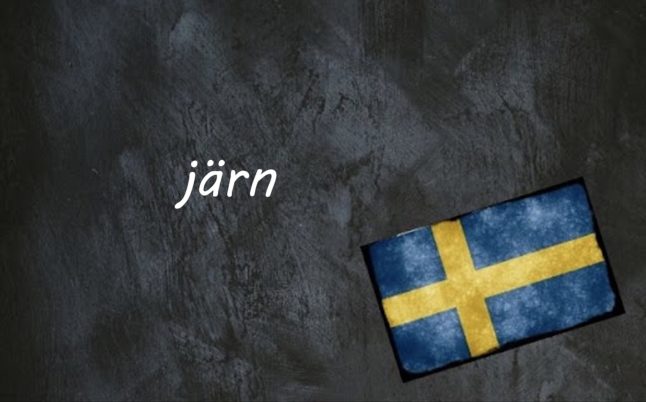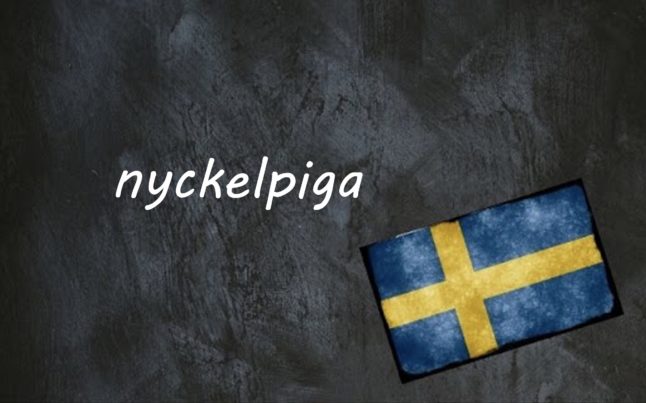It originates from the Old Swedish word iærn, which in turn comes from Old Norse járn, which has its roots in a Proto-Germanic word, the same word English iron and German Eisen come from.
It can be used to refer to the metal and chemical element iron, as well as golf irons, but is also commonly used in compound words referring to some sort of tool or appliance made of metal, just like in English.
Some examples of these are an iron used to iron clothes, which is a strykjärn, and a waffle iron (våffeljärn). You’ll also see it in the Swedish word for cast iron, gjutjärn.
A strong alcoholic drink can be described as a järn, and it can also colloquially refer to a prisoner sitting in shackles.
You might also have noticed it in the Swedish word for railway, järnväg, which literally translates to “iron road”. Swedish railway company SJ’s name comes from Statens Järnvägar, the government agency which was until 2001 responsible for operating Sweden’s state-owned railways.
If you’re particularly interested in Swedish railways, you can even visit one of Sweden’s many järnvägsmuseer or railway museums. The national järnvägsmuseet is in Gävle, but it is closed for refurbishment until spring 2024.
There are also a number of Swedish idioms which use the word järn, some of which also exist in English.
Someone who is trying to do too many things at once might be described as having många järn i elden (many irons in the fire), while you might be told to smida medan järnet är varmt (strike while the iron is hot) if you need to make quick use of an opportunity.
Example sentences:
Han hade redan ett par järn innanför västen innan han kom till julbordet.
He’d already had a few stiff drinks before he came to the Christmas meal.
Sveriges järnvägsnät sträcker över hela det svenska fastlandet.
Sweden’s railway network stretches across the entire Swedish mainland.
Don’t miss any of our Swedish words and expressions of the day by downloading The Local’s new app (available on Apple and Android) and then selecting the Swedish Word of the Day in your Notification options via the User button.



 Please whitelist us to continue reading.
Please whitelist us to continue reading.
Member comments